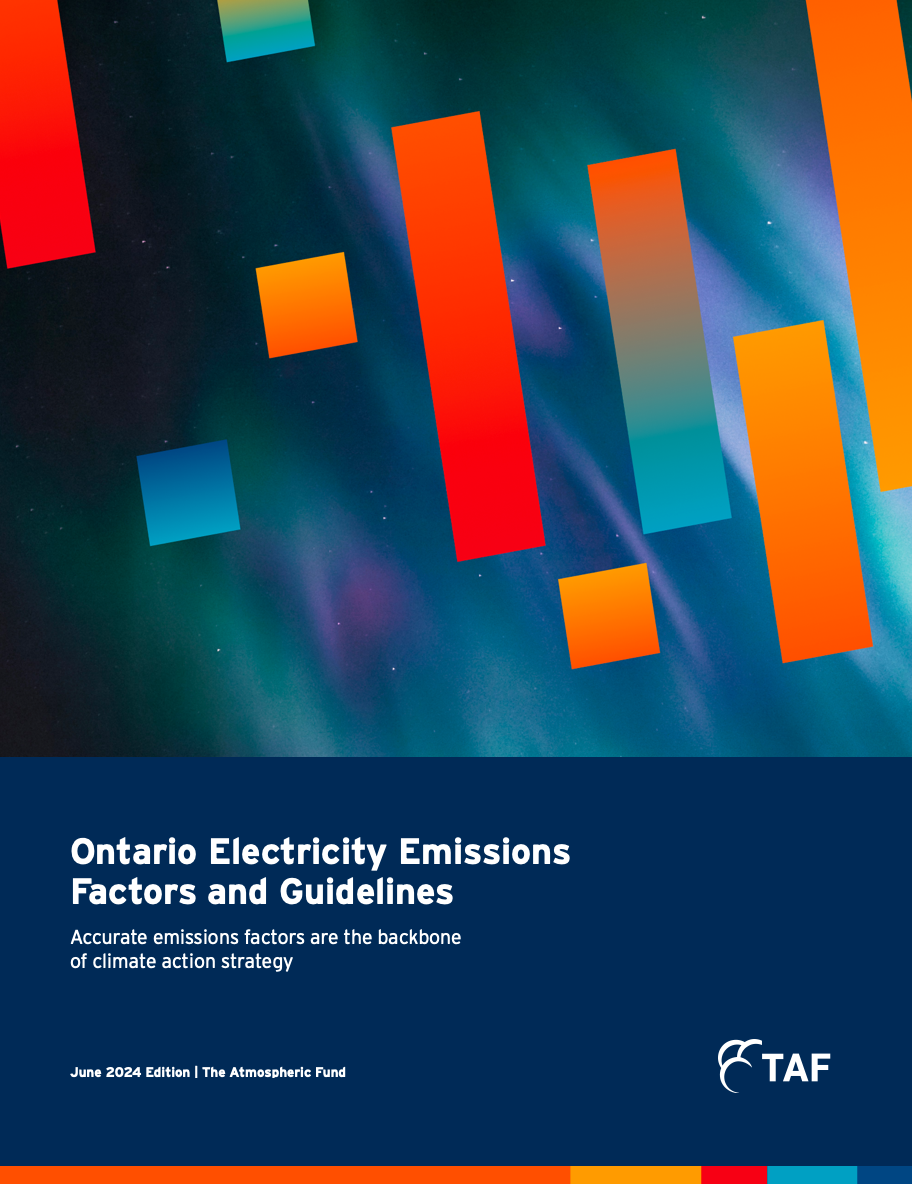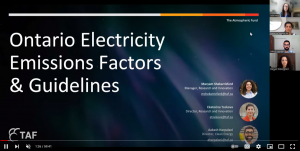2024 Edition
TAF has published emissions factors since 2017 to support best practices in greenhouse gas quantification. Accurate emissions factors are the backbone of climate action strategy, revealing how various interventions impact carbon reductions.
This year, there is less forecasting data available from the Independent Electricity System Operator (IESO) and more natural gas in the electricity grid, making planning for electrification more complex.
We have just published updated factors with the available data, which were developed in consultation with other experts and stakeholders. The new numbers allow users to quantify greenhouse gas emissions and plan climate strategies as accurately as possible.
Regulatory Recommendations
To address data gaps and growing emissions from the electricity grid, TAF recommends the following:
1. The IESO should publish historical marginal resource data to enable better understanding of the carbon impacts of load shifting.
It is challenging to deduce which resource is on the margin (for example, whether a fossil fuel or non-emitting resource is setting the market clearing price) using currently published data. This in turn makes it challenging to evaluate the utility of shifting loads or using battery storage to mitigate carbon emissions. We strongly suggest publishing disaggregate historical data on the resource that is on the margin for any given hour on the IESO’s public data portal.
2. The IESO should resume publishing long-term planning forecasts that include projections of grid-related carbon emissions, supported by clear assumptions and input data.
Unlike previous versions, the 2024 Annual Planning Outlook (APO), did not include a data table containing annual projections on total grid-related emissions. We recognize that there exists significant policy and procurement uncertainty which might make such forecasts unreliable. Those forecasts, however, are critical to the assessment of long-term investment decisions and need to be included in all APOs, either as a single forecast or a set of scenarios. We also strongly suggest including an additional data table in future APOs with annual projections on how often gas-fired generation is expected to be on the margin by season and time of day.
3. The Ontario Ministry of Energy and Electrification should direct the IESO to increase the speed at which new non-emitting
generation is built to fully realize emissions reductions through electrification efforts.
Ramping up the use of gas-fired generation in Ontario will undermine carbon reductions associated with switching to electric space and water heating, vehicles, and industrial processes. If Ontario instead commits to meeting all new demand with non-emitting generation, the marginal electricity emissions associated with electrification efforts will effectively be zero, achieving significant carbon reductions through fuel switching. Such a commitment would boost investor confidence in the province, ensuring that capital spent on projects that create new electricity demand wouldn’t result in additional grid-related emissions.
Decision Aids
The following table can assist in determining which specific emissions factors should be used in common scenarios. The factors presented in this guideline account only for direct (combustion) emissions, and thus can underestimate the global impact of interventions.
Annual AEF
- Historical or forecasted inventory analysis.
Hourly AEF
-
Historical inventory analysis, specifically where more precision is needed.
Annual AEF (Proxy for annual long-run MEF)
- Historical or forecasted analysis.
- For the majority of scenarios, including fuel switching, energy efficiency, and compliance with standards and/or building portfolio targets.
Hourly AEF (Proxy for hourly long-run MEF)
- Historical analysis where more precision is needed.
Peak/Off-Peak MEF
- Forecasted analysis.
- For specific use cases like load shifting (e.g., smart appliances, smart heating systems, electric vehicle charging), and energy/ battery storage. Note: In the absence of publicly available granular data, TAF is only able to publish limited peak/off-peak MEFs for 2024 and 2030 at this time, derived from data provided to us by the IESO.


